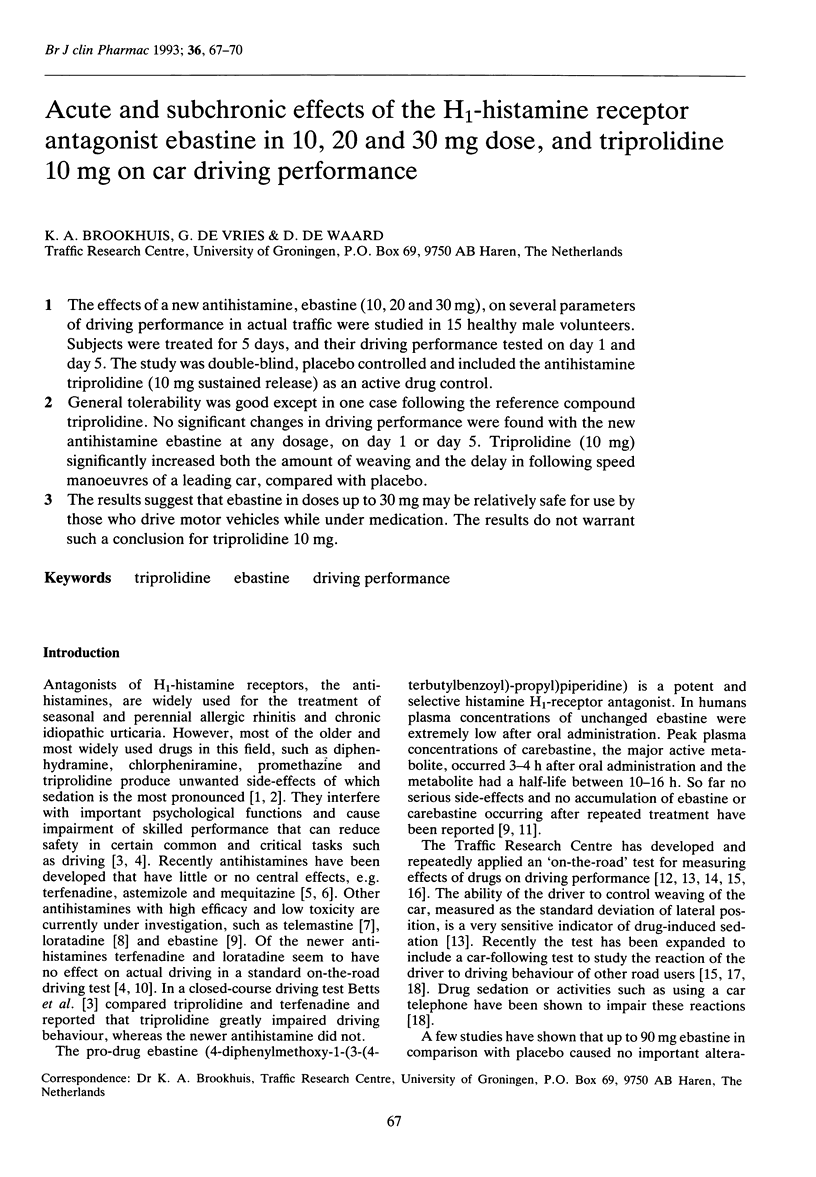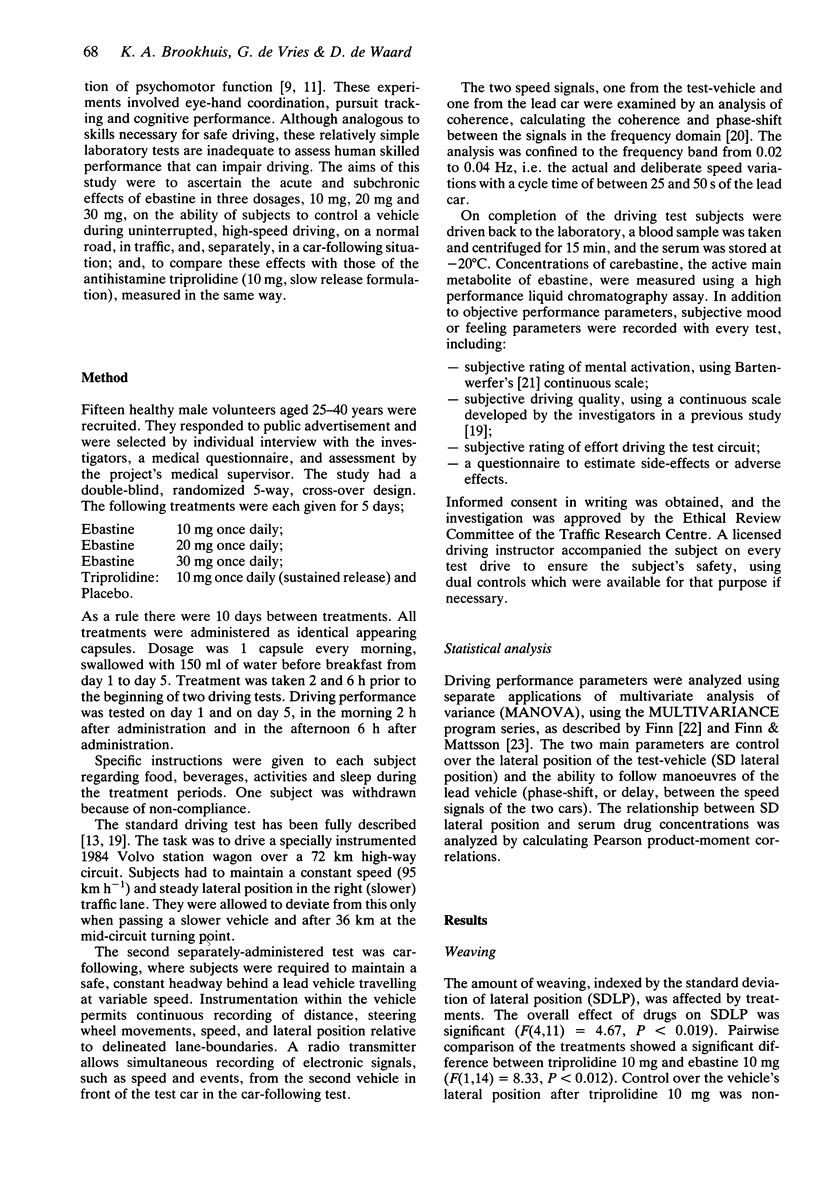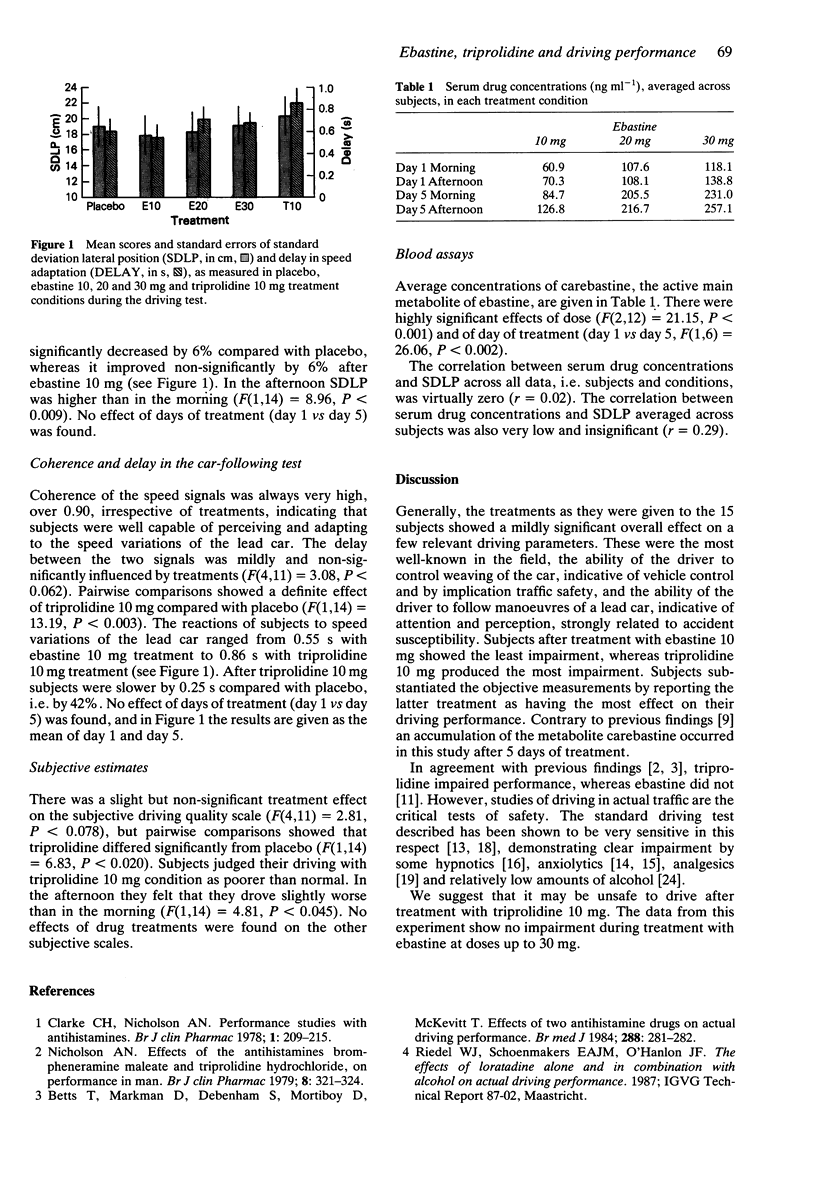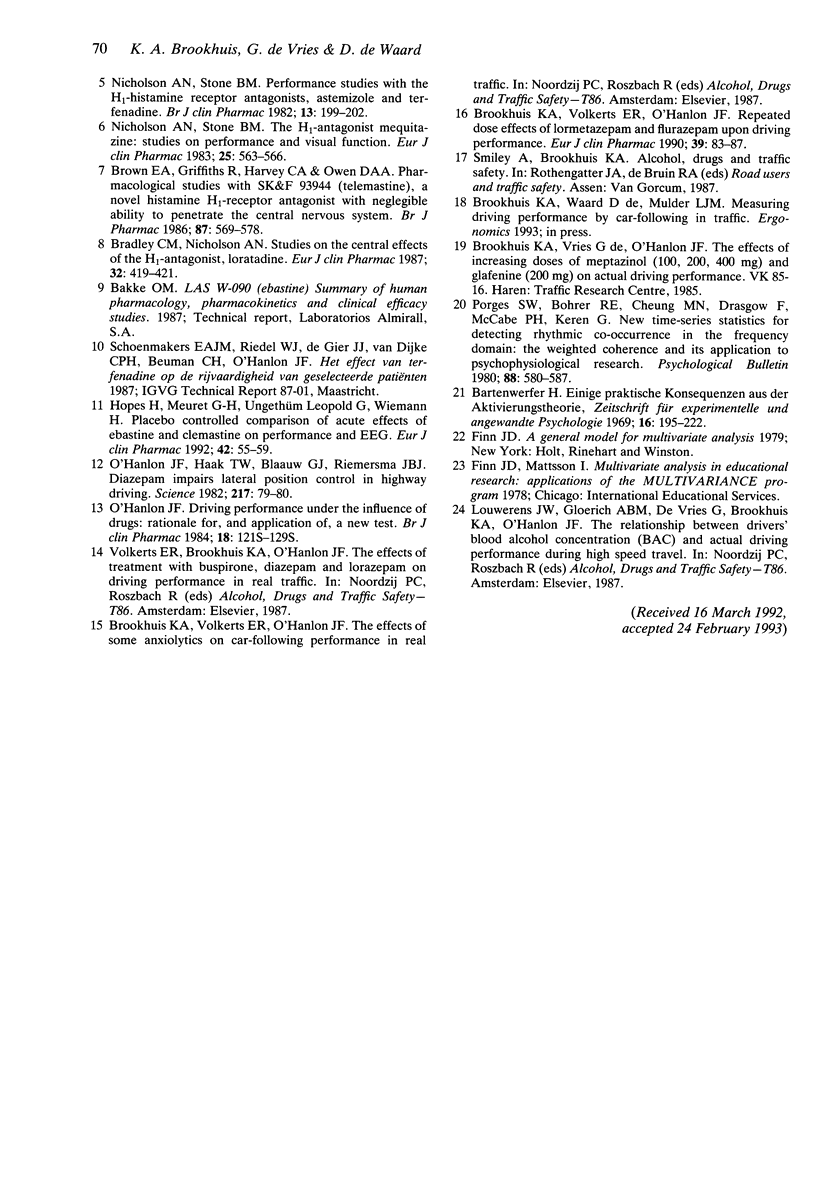Abstract
1. The effects of a new antihistamine, ebastine (10, 20 and 30 mg), on several parameters of driving performance in actual traffic were studied in 15 healthy male volunteers. Subjects were treated for 5 days, and their driving performance tested on day 1 and day 5. The study was double-blind, placebo controlled and included the antihistamine triprolidine (10 mg sustained release) as an active drug control. 2. General tolerability was good except in one case following the reference compound triprolidine. No significant changes in driving performance were found with the new antihistamine ebastine at any dosage, on day 1 or day 5. Triprolidine (10 mg) significantly increased both the amount of weaving and the delay in following speed manoeuvres of a leading car, compared with placebo. 3. The results suggest that ebastine in doses up to 30 mg may be relatively safe for use by those who drive motor vehicles while under medication. The results do not warrant such a conclusion for triprolidine 10 mg.
Full text
PDF



Selected References
These references are in PubMed. This may not be the complete list of references from this article.
- Betts T., Markman D., Debenham S., Mortiboy D., McKevitt T. Effects of two antihistamine drugs on actual driving performance. Br Med J (Clin Res Ed) 1984 Jan 28;288(6413):281–282. doi: 10.1136/bmj.288.6413.281. [DOI] [PMC free article] [PubMed] [Google Scholar]
- Bradley C. M., Nicholson A. N. Studies on the central effects of the H1-antagonist, loratadine. Eur J Clin Pharmacol. 1987;32(4):419–421. doi: 10.1007/BF00543979. [DOI] [PubMed] [Google Scholar]
- Brookhuis K. A., Volkerts E. R., O'Hanlon J. F. Repeated dose effects of lormetazepam and flurazepam upon driving performance. Eur J Clin Pharmacol. 1990;39(1):83–87. doi: 10.1007/BF02657065. [DOI] [PubMed] [Google Scholar]
- Brown E. A., Griffiths R., Harvey C. A., Owen D. A. Pharmacological studies with SK&F 93944 (temelastine), a novel histamine H1-receptor antagonist with negligible ability to penetrate the central nervous system. Br J Pharmacol. 1986 Mar;87(3):569–578. doi: 10.1111/j.1476-5381.1986.tb10199.x. [DOI] [PMC free article] [PubMed] [Google Scholar]
- Hopes H., Meuret G. H., Ungethüm W., Leopold G., Wiemann H. Placebo controlled comparison of acute effects of ebastine and clemastine on performance and EEG. Eur J Clin Pharmacol. 1992;42(1):55–59. doi: 10.1007/BF00314920. [DOI] [PubMed] [Google Scholar]
- Nicholson A. N. Effect of the antihistamines, brompheniramine maleate and triprolidine hydrochloride, on performance in man. Br J Clin Pharmacol. 1979 Oct;8(4):321–324. doi: 10.1111/j.1365-2125.1979.tb04712.x. [DOI] [PMC free article] [PubMed] [Google Scholar]
- Nicholson A. N., Stone B. M. Performance studies with the H1-histamine receptor antagonists, astemizole and terfenadine. Br J Clin Pharmacol. 1982 Feb;13(2):199–202. doi: 10.1111/j.1365-2125.1982.tb01356.x. [DOI] [PMC free article] [PubMed] [Google Scholar]
- Nicholson A. N., Stone B. M. The H1-antagonist mequitazine: studies on performance and visual function. Eur J Clin Pharmacol. 1983;25(4):563–566. doi: 10.1007/BF00542129. [DOI] [PubMed] [Google Scholar]
- O'Hanlon J. F. Driving performance under the influence of drugs: rationale for, and application of, a new test. Br J Clin Pharmacol. 1984;18 (Suppl 1):121S–129S. doi: 10.1111/j.1365-2125.1984.tb02590.x. [DOI] [PMC free article] [PubMed] [Google Scholar]
- O'Hanlon J. F., Haak T. W., Blaauw G. J., Riemersma J. B. Diazepam impairs lateral position control in highway driving. Science. 1982 Jul 2;217(4554):79–81. doi: 10.1126/science.7089544. [DOI] [PubMed] [Google Scholar]
- Porges S. W., Bohrer R. E., Cheung M. N., Drasgow F., McCabe P. M., Keren G. New time-series statistic for detecting rhythmic co-occurrence in the frequency domain: the weighted coherence and its application to psychophysiological research. Psychol Bull. 1980 Nov;88(3):580–587. [PubMed] [Google Scholar]


